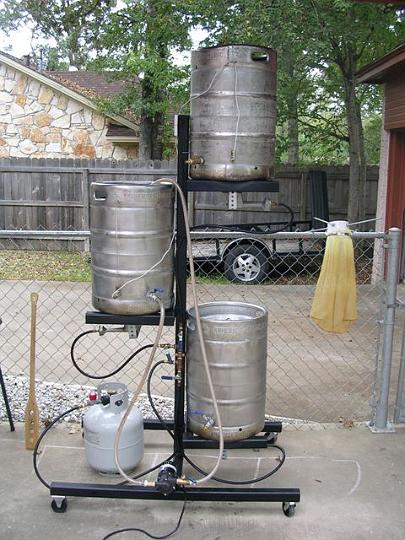I have just tested my new setup with the March pump.
My tuns have been about a thrid full, so, OK, not full gravity pressure.
Sure when it gets going, the flow is pretty good.
Getting it to prime however is such a PITA.
I can't seem to reliably get a flow.
My pump is mounted horizontally with inlet upward and about 1 to 1.5 feet below the outlets of my tuns.
Most of the time I open a valve, and the liquid just sits there in the hose with an air bubble in it, and the pump gnashing empty.
How low below your outlet do you need to be?
Do you need to have some sort of dump valve below the assemply to draw liquid down through the pump or a vent or something?
Cheers,
Yorg
My tuns have been about a thrid full, so, OK, not full gravity pressure.
Sure when it gets going, the flow is pretty good.
Getting it to prime however is such a PITA.
I can't seem to reliably get a flow.
My pump is mounted horizontally with inlet upward and about 1 to 1.5 feet below the outlets of my tuns.
Most of the time I open a valve, and the liquid just sits there in the hose with an air bubble in it, and the pump gnashing empty.
How low below your outlet do you need to be?
Do you need to have some sort of dump valve below the assemply to draw liquid down through the pump or a vent or something?
Cheers,
Yorg








